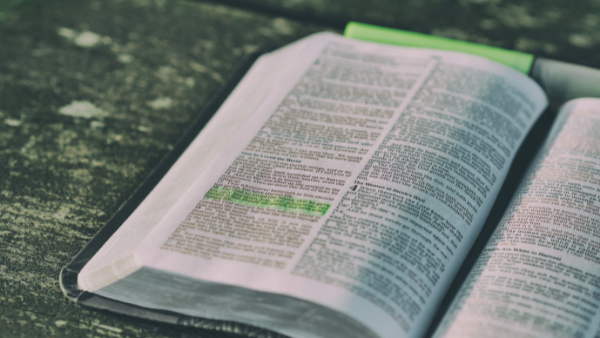By Douglas K. Wilson, Ph. D.
Executive Director of the Center for Christian Calling, University of Mobile
THE FIRST CHRISTMAS
Luke 2:1–15
For the last 40 years, family tradition in the Wilson home has included gathering in the living room on Christmas Eve to read the birth narrative of Jesus from Luke 2:1–20 (KJV). Along with sweets and gifts and bustling children, we remind ourselves that Christmas is all about Jesus. For our readers, you might want to consider making this Bible reading part of your family tradition if you haven’t already.
The Location (1–5)
“And it came about in those days …” Luke provides a simple explanation for how the supernaturally pregnant Nazarene virgin and her Galilean fiancé relocated temporarily down south in Bethlehem of Judea, where she bore her first child. The Roman government made them move to the ancestral hometown of David for tax purposes.
Matthew focuses on fulfillment of Old Testament prophecy as reason for a Bethlehem birth, alluding to the Abrahamic and Davidic covenants before quoting directly from Isaiah 7:14 and Micah 5:2 (Matt. 1–2). By contrast, Luke points to the historical (Augustus) and political (Quirinius) and economic (taxing) contexts of the events.
The Birth (6–7)
“And so it was, that, while they were there …” These verses provide details that answer questions often raised about Jesus’ birth and family.
Luke’s reference to “her firstborn son” rules out the perpetual virginity of Mary. Swaddling clothes for the newborn served the dual purpose to protect the baby and to provide burial cloth in the event that he did not survive his early days (hence, naming and circumcision occurred on the eighth day).
A manger is a feeding trough, though scholars differ about the nature of this one. Was it a free standing cradle-like structure, or was it a sunken portion of a floor where livestock could stand and eat while under the covering of a home? And the inn — was it a caravansary (like a modern travel lodge) with a no vacancy sign, or was it a side room of a home?
Kenneth Bailey argues for the latter in “Jesus through Middle Eastern Eyes.”
Humble beginnings. This would be an apt description of our Savior’s birth. Mary placed Jesus in a borrowed feeding trough in an overcrowded town among distant cousins all there for a census.
How appropriate that his entire life was characterized by humility, from his borrowed manger at birth to his borrowed burial site in death.
The Declaration (8–15)
“And there were in the same country shepherds abiding in the field …” Winter is not normally the best season for shepherding in open fields. Some Messianic Jews contend that Jesus’ birth occurred in the fall, on Rosh Hashanah. Since Luke does not identify the season, it will remain as undetermined from the text.
The other details are clear, and what a contrast! It began when the night shift started with sunset: dusk, deep darkness, bright stars and quietness as the bleating gave way to an occasional baa. And then a terrifying display of sight and sound pierced the darkness and awakened them from their nighttime stupor.
These shepherds were audience to an unexpected angelic revelation. Behold! Good news! Great joy! A Savior is born! Let’s go!
By the time the celestial messengers finished their concert, the night watchmen were heading into town with eager anticipation. How would this baby be different from all others? They would have to wait to find out.



Share with others: